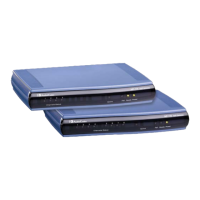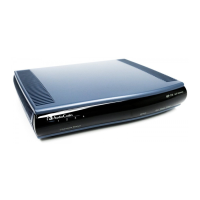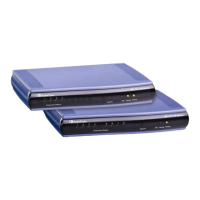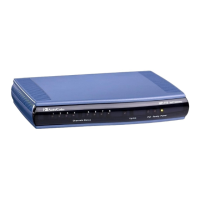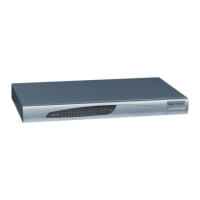SIP User's Manual 356 Document #: LTRT-65412
MP-11x & MP-124
Parameter Description
Notes:
For this feature to be functional, you must also set the
parameter RTPRedundancyDepth to 1 (i.e., enabled).
Currently, the negotiation of “RED” payload type is not
supported and therefore, it should be configured to the
same PT value for both parties.
Web: RFC 2198 Payload Type
EMS: Redundancy Payload Type
[RFC2198PayloadType]
RTP redundancy packet payload type, according to RFC
2198.
The range is 96 to 127. The default is 104.
Note: This parameter is applicable only if the parameter
RTPRedundancyDepth is set to 1.
Web: Packing Factor
EMS: Packetization Factor
[RTPPackingFactor]
N/A. Controlled internally by the device according to the
selected coder.
Web/EMS: Basic RTP Packet Interval
[BasicRTPPacketInterval]
N/A. Controlled internally by the device according to the
selected coder.
RTP Directional Control
[RTPDirectionControl]
N/A. Controlled internally by the device according to the
selected coder.
Web/EMS: RFC 2833 TX Payload
Type
[RFC2833TxPayloadType]
N/A. Use the ini file parameter RFC2833PayloadType
instead.
Web/EMS: RFC 2833 RX Payload
Type
[RFC2833RxPayloadType]
N/A. Use the ini file parameter RFC2833PayloadType
instead.
Web: RTP Base UDP Port
EMS: Base UDP Port
[BaseUDPport]
Lower boundary of UDP port used for RTP, RTCP (RTP
port + 1) and T.38 (RTP port + 2). The upper boundary is
the Base UDP Port + 10 * (number of device's channels).
The range of possible UDP ports is 6,000 to 64,000. The
default base UDP port is 6000.
For example: If the Base UDP Port is set to 6000 (default)
then:
1) The first channel uses the following ports RTP 6000,
RTCP 6001, and T.38 6002, 2) the second channel uses
RTP 6010, RTCP 6011, and T.38 6012, etc.
Notes:
If RTP Base UDP Port is not a factor of 10, the following
message is generated: 'invalid local RTP port'.
For detailed information on the default RTP/RTCP/T.38
port allocation, refer to the Product Reference Manual.
For this parameter to take effect, a device reset is
required.

